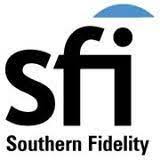
Retiree Fujio Umemoto sails a yacht near Hayama, Kanagawa, Japan. Retirees like Umemoto look for a ... [+] steady stream of income from their investments to fund their retirement. The StrategyShares Nasdaq 7Handl Index ETF provides that with a 7% annual distribution. Photographer: Akio Kon/Bloomberg
© 2017 Bloomberg Finance LPEveryone wants yield, but they're stuck in a zero yield environment.
And the place investors have found yield - dividend stocks — has become a mine field with companies announcing dividend cuts nearly every day, reducing payouts and yield.
However, one ETF seeks to pay a consistent annual distribution rate of 7% the fund's net asset value come rain or shine. The StrategyShares Nasdaq 7Handl Index ETF (HNDL) HNDL is the only fund that commits to a 7% yield.
In an era where the Federal Funds Rate effectively sits at 0% and the 10-year Treasury note pays a yield of 0.7%, income investors have sought yield among the usual suspects: dividend stocks, preferred stocks, closed-end funds, real estate investment trusts (REITS), master limited partnerships (MLPs) and the ETFs that hold these assets.
Most of these products have seen their yields surge as their share prices fall, some even into double digits. However, total return is what matters to investors. It doesn't do them any good to receive a 6% yield if the fund loses 20% of its value. In addition, one of the rules of dividend investing is beware of high yields as they could signal a company in trouble about to cut its dividend.
The Nasdaq 7HANDL Index ETF is a fund of low-cost funds that follow two indexes in a 50-50 ratio, giving the portfolio long-term growth and stability.
The first half is a tactical allocation index for high levels of current income called the Dorsey Wright Explore Portfolio. It holds the largest, most liquid and least expensive ETFs in 12 categories: dividend stocks, preferred dividend stocks, utility stocks, growth & income equities, covered calls, active fixed income, intermediate-term corporate bonds, mortgage-backed securities, high-yield bonds, master limited partnerships (MLPs), real estate investment trusts (REIT), and taxable municipal bonds.
The other half is the Core Portfolio, which provides long-term exposure to the U.S. fixed-income and equity markets with allocations fixed at 70% bonds and 30% stocks. It holds three large-cap blend equity ETFs, the three least-expensive aggregate bond ETFs, and the least expensive NASDAQ-100 Index ETF. Both sides of the index are rebalanced monthly.
Then like a closed-end fund, HNDL boosts its return by throwing in a little leverage equal to 23% of the portfolio. If after all that the dividends and bond income doesn't produce enough cash to fund the distribution, the ETF employs the tactic of return on capital (the money investors put into the fund), which has the added benefit of lowering an investor's tax bill.
Bonds are obligated to pay interest to bondholders on a regular basis, but there's no obligation for a company to pay dividends. When revenues dry up, as they have in the pandemic lockdown, companies may realize they don't have enough cash flow to pay all their expenses. In order to save cash, dividends are often cut or eliminated. In addition, companies that receive loans under the Coronavirus Aid, Relief and Economic Security (CARES) Act are not allowed to pay dividends for the duration of the loan.
Investors who rely on income, especially those in retirement, had gravitated to dividend stocks because bonds pay so little. They could be in for a big shock. Many steady dividends payers have said they will cut their dividends or eliminate them completely. For people who live off of dividends, a severe cut would significantly affect the amount of money they have to live on.
From 2007 to 2009, the dividend payout from companies in the S&P 500 Index fell 29%, Edward Yardeni, president of Yardeni Research, told the New York Times NYT . In April, Goldman Sachs GS GSBD analysts said at least 30 companies in the S&P 500 have announced plans to cut or lower dividends. Goldman added it expects overall dividends to fall 23% this year.
In this environment, a fund that all-but promises to pay a consistent distribution is a rare find. From February 2018, the month when HNDL launched, through May 2020, a 28-month time period that saw the Coronavirus Market Crash and Rebound, HNDL handily beat its competition.
Chart showing the difference in compound annual growth rate (CAGR), volatility and risk-adjusted ... [+] returns of ETFs focused on providing a high-yield annual income.
HANDLS IndexesThe chart above, "Risk and Reward of Income ETFs", shows results over the 28-month time period, in which HNDL posted a compound annual growth rate (CAGR) of 5.2% with a standard deviation, or level of volatility, of 8.8%, according to HNDL. A lower standard deviation means the share price experiences lower volatility. HNDL's Sharpe ratio, which measures risk adjusted return, is 0.41. The higher the number, the lower the risk.
Compare that to the Multi-Asset Diversified Income ETF (MDIV) MDIV , which holds stocks, bonds and other assets, has $497 million under management, and sports a yield of 8.1%. While HNDL's return is up 1.7% year to date (June 3), MDIV is down 21%, according to Morningstar.
Over the 28-month period, MDIV posted a CAGR of -7.2%, 1,204 basis points below HNDL and had a standard deviation of 24.3%, showing it to be much more volatile. Its Sharpe ratio is -0.25, much higher risk.
Meanwhile, the Amplify High Income ETF (YYY) YYY , which has $188 million in assets and a yield of 11.9%, holds a basket of closed-end funds, an asset group that experienced severe illiquidity during the March sell-off. Year to date, the fund's return is -13.3%, according to Morningstar. It's CAGR was -3.7%, 890 basis points lower than HNDL. It had a standard deviation of -19.6% and a Sharpe ratio of -0.18.
Overall the HNDL fund performed better with less volatility, showed a higher risk-adjusted return, and offers investors a predictable monthly cash flow. The expense ratio is 1.2%
Source




